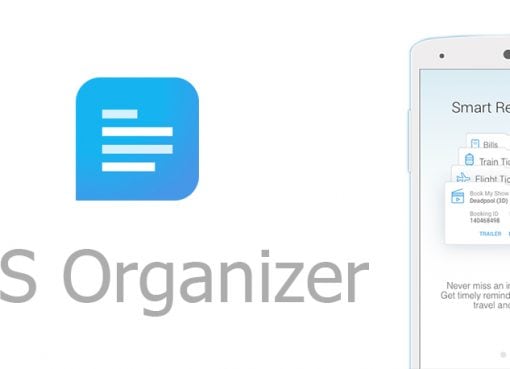Android is an open source operating system. What this means is that smartphone manufacturers have the freedom to tweak the operating system, before loading them onto their smartphones. Because of this, they have complete control over the look of the OS, features and the bundled apps. The bigger problem is that they also have control over the OS updates and as a result, very few phones get them. Manufacturers usually release an OS update for their flagship phones. Even then, most Android phones only get access to a single update. As a result, you don’t get the latest features launched on latest Android operating systems. If you have a two year old phone, chances are that it’s running an older OS. However there is way to get the latest Android OS on your old smartphone by running a custom ROM on your smartphone. It’s a slightly complicated process, and we’ll show you how to do it.
Note:
Be advised that running a custom ROM can be a difficult task. We recommend it at your own risk. It requires you to unlock the bootloader on the phone, which will void its warranty. Reliance Digital is not responsible for any damage done to your device. If not done right, there is also the risk of turning your device into a brick, which means it won’t work. Hence it’s important to be well prepared. This article is a good beginner’s guide to get you familiar with the process but you might have to go further and do a little more research before setting out to do it yourself. You will find resources online that teach you how to flash a ROM, specifically for your device.What is a custom ROM?
A ROM is essentially a modified version of Android. It is designed to run better than the stock Android which smartphone manufacturers carry. It has more features and is largely customizable. You can tweak the look, enhance the battery and even improve the general performance. There are plenty of ROMs available online. XDA Developers Forum is a good place to start if you would like to learn more.
One of the primary reasons to run a custom ROM is to get your hands on the latest Android OS update. If you don’t own a flagship phone, chances are that you won’t have access to the latest OS updates. However, by running a custom ROM, this can be overcome, even on phones which are a couple of years old!
Most Android versions on smartphones are filled with unwanted bloatware, in the form of apps and heavy interfaces. Running a custom ROM allows you to get rid of them, leaving only the useful apps. Such a light custom ROM will not only improve the performance but also enhance the whole Android experience.
Running a custom ROM also gives you access to features beyond the ones manufacturers offer. For example, you can customize your device by adding shortcut gestures which can be accessed right from the home screen. Some Custom ROMs also let you overclock your device speeds, making it much faster and more powerful.
If you’re bored of your current operating system, running a custom UI is a good idea. Every custom ROM, comes with a unique look and there are plenty of options to choose from. You can opt for something that looks good, or something simple such as the stock UI. You can also simply run a beefed up version of your existing OS, but do make sure that you choose the right ROMs.
Step 1 - Unlock the Bootloader
The bootloader decides whether to run the Android system or the recovery whenever the device is switched on. Hence, the custom recovery can only be run once the bootloader has been unlocked. This is probably the trickier part of the process and hence must be done carefully.

On the phone, enable both ‘Developer option’ and ‘USB debugging mode’. This can be done by going into ‘Settings’ – ‘About phone’ and tapping seven times on the ‘Build Number’. The ‘USB debugging’ option will show up in the ‘Developer option’.
1. ‘adb reboot bootloader’ – This will reboot the smartphone into the bootloader
If all goes well, you would have successfully unlocked your bootloader.
Step 2 - Run a Custom Recovery
Recovery is a part of the Android system and can act as a mini operating system by itself - running backups and updates, deleting user and cache. It also does major task – installing ROMs. However, the default recovery on most smartphones has its limitations and that’s where a custom recovery is useful. For instance, it allows the system to run Custom ROMs amongst other features.

There are plenty of custom recovery tools to choose from, but the two most popular ones are TWRP and ClockworkMod (CWM). We recommend using one of the two as most devices are compatible with them. Visit the respective website and download the version that is compatible with your device.
1‘adb reboot bootloader’ – This will reboot your device into bootloader mode
Step 3 - Backup the existing Operating system
The next thing to be done is to back up your OS. One of the features of the custom recovery besides running a custom ROM is the ability to make a ‘Nandroid’ backup. This is a backup of your existing OS and allows you to go back to things the way they were, in case you run into trouble. We highly recommend doing this. To do this, reboot into the custom recovery. Different devices have different ways to do this, however a combination of pressing the power button and a volume button after switching on the phone should work on most devices.

Be advised, before you get to the custom recovery menu, that the only way to navigate on some phones will be with the help of the volume keys and power button. In the custom recovery, you can use the touchscreen. Now go to ‘Backup’ or ‘Nandroid’. If possible, name the backup for safekeeping and wait until the backup is complete. This may take a while.
Step 4 - Flash the Custom ROM

Step 5 - Flashing GApps (Google apps)

Note: We’d like to stress again that there is a risk involved in installing and running a custom ROM, but as long as you’ve done enough research you shouldn’t have a problem. XDA Developers Forum is a good place to start.



